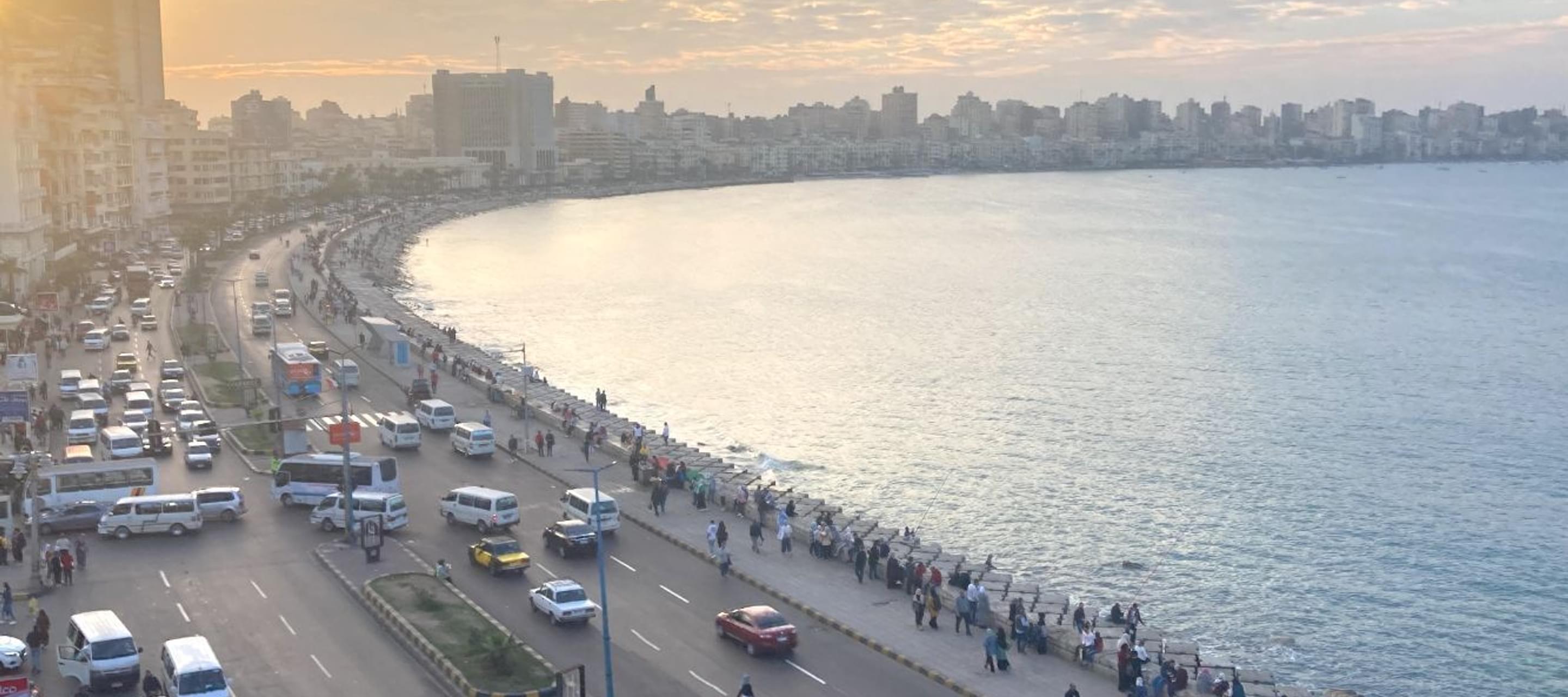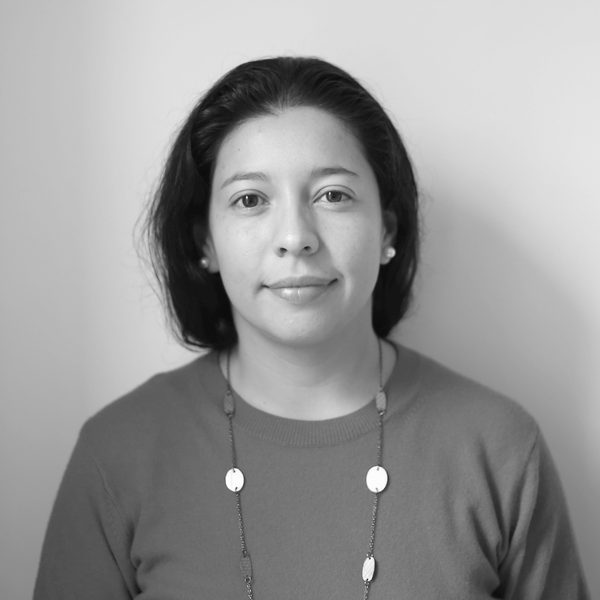COP27 Reflections: human rights are increasingly on the built environment and climate action agendas
14 December 2022

IHRB’s Built Environment programme played an active role at last month’s COP27 in Sharm El-Sheik, Egypt where over 35,000 participants aimed to make faster progress on addressing the climate crisis. Our team attended 24 built environment-related sessions (such as: “Practical Solutions to Accelerate Building Decarbonisation”, “How Housing Retrofits Save Embodied Carbon”, “Just Transition and the Future of work”, etc.), and spoke on 6 panels (see more on our interventions at the end of the page). We also held a series of bilateral meetings with existing and potential partners, and made many new global contacts where powerful synergies can help carry forward our work in this area.
The built environment –the buildings and infrastructures where we live, work, and interact with others, and their planning, design, construction, and (re)development– is playing an increasingly central role in the global climate dialogue. This is because of its important social and environmental functions:
- to offer (metaphorically and literally) spaces for communities to thrive;
- to offer and require large concentrations of labour supply
- to be an arena for contention over decision-making, citizen participation, questions on how and why an area is developed, or contention over if building(s) would impact positively or negatively various population groups. We can say the built environment is often the scenario where human rights are actualised or denied;
- the built environment is both a cause and effect of climate change. On one hand, rapid urbanisation (either formal or informal) can put substantial pressure on natural habitats, replacing green and blue spaces with –concrete and steel– built areas, creating issues of urban heat, pollution, and waste, thus exacerbating climate change. On the other hand, climate change impacts, like sea level rise, pose a threat to informal (and) coastal settlements, where infrastructure is weak, vulnerable, or insufficient. This has also led to relocations and/or urban developments in new areas (either formally or informally).
This intertwined relationship was finally acknowledged at COP27, where the first-ever ministerial meeting on urbanisation and climate change took place. This is an important first step in global dialogue and coordination to address issues of resilient housing, and urban development that respects and coexists with the natural environment. This historical convening also recognises that urban settlements are where the impacts of climate change are experienced closely, where many of its causes lie, and therefore, also where much of the potential solutions could be found.
Key Built Environment takeaways from COP27
1. Various definitions of ‘justice’ can coexist
The quantity and diversity of events and dialogues at COP27 around topics of justice and just transitions reiterated the urgent need to address both environmental and social issues in tandem. These also made clear that different stakeholders have varying interpretations of what ‘justice’ means in the context of climate change. Multiple definitions or approaches aren’t necessarily a challenge for global advocacy, but rather, help point out the many areas where injustice exists in the world and the need for diverse strategies to address them.
For example, Sharm El-Sheik heard strong claims from Global South countries about the need to address historical socio-economic inequalities with counterparts from the Global North. Longstanding calls for distributive, procedural, and restorative justice in climate change negotiations were central to the agreement to set up a ‘Loss and Damage Fund’, one of the main outcomes of COP27. It was also evident that the notion of ‘justice’ varies greatly depending on groups that make specific claims. For example, low-income households who struggle with energy poverty demand financial assistance, and regulation on energy monopolies. Farmers and produce consumers affected by exploitation and climate change, urge reforms in the agricultural sector. Similarly, in the built environment sector, workers in construction and materials, as well as tenants and marginalised neighbourhoods and informal settlements, are all seeking justice: decent working and living conditions, their right to housing, to a clean and healthy environment, to be regarded in city-shaping processes, i.e. exercise their ‘right to the city’, and ultimately, improve their quality of life.
This diversity –of definitions and claims for ‘justice’– shows the different sectors where social justice needs to be mainstreamed
Conversations with construction companies, architects, government officials, NGOs, and community groups at COP27 pointed to an interpretation of ‘justice’ as the reconfiguration of power relations. There is increasing realisation that self-interested, unilateral actions centred exclusively on profit extraction from real estate assets is not a (socially) sustainable method of urban development. This exacerbates current socio-spatial inequalities by taking advantage of the less powerful and already marginalised, even at the expense of human dignity. Governments and businesses are responsible to not do, nor support, such type of development that disregards human rights. If this continues, social pressure will build up, and fuel political instability through civil unrest, strikes, protests, and widespread community opposition. Such unrest can disrupt project implementation, damage public relations, and jeopardise government approval rates.
Attention to social justice is a strategic and moral imperative for businesses and governments
Diverse interpretations and approaches to achieving social justice can clearly co-exist. Together, they can galvanise support for cross-cutting strategies based on human-rights. This would strengthen respect for fundamental freedoms and restore decision-making power to those groups traditionally disregarded, excluded, or exploited. Hence, the importance of inter-sectoral and multi-scalar collaboration to ensure ‘justice’ and ‘Just Transition” claims are not discounted as meaningless buzzwords, but rather become an inescapable pursuit worldwide.
2. ‘Just Transitions in the Built Environment’ discourse is becoming more assertive
Previous COPs failed to prioritise the social dimensions of climate transitions, and more specifically, human rights risks in decarbonisation processes. At COP27, that finally began to change as government and industry actors have shown awareness of the existing ‘social dimension gap’ and the need to address it. Social equity is assuming a more central role, than in the past, requiring spaces and partnerships that increase shared knowledge and collective action to advance this agenda. That is where IHRB’s Built Environment Programme and our key partners are willing and able to contribute.
Three further observations from COP27 suggest emerging openness to human rights messages and strategies, and to the importance of ‘Just Transitions in the Built Environment’ at the global level:
- Openness and understanding of the business sector to social impact: more companies are becoming aware of human rights risks linked to their climate transition actions, and are more receptive to guidance that would minimise these risks in their operations. However, some materials, building, and construction companies still have much work to do to fully recognise and address human rights issues across their activities and supply chains.
- Boldness and critical thinking from high-level panels, to side conversations over coffee or in the shuttle bus. Such rich exchanges promote a deeper understanding of root causes of urban issues, and call for multi-disciplinary collective efforts to address them.
- A welcomed message: We discussed human rights challenges and opportunities for workers in the construction industry and down the supply chain, for tenants and city dwellers, and civil society in general; with partners, we explored the enablers of change in the built environment sector, and the role that each sector should play. The audiences welcomed this perspective, stating it is needed. One person even thanked the “refreshing” message on the importance of the social dimension of the transition.
Our role is to convey a clear and assertive message: that transitions in the built environment sector must be just, inclusive, and grounded in human rights.
3. Understanding the people whose rights are impacted by the climate crisis is a core objective
Indigenous groups, transport workers, construction workers, tenants, and marginalised neighbourhoods/informal settlements are all affected stakeholders who must be heard and be part of decision-making processes
There is an opportunity to ‘join the dots’ between these 5 population groups all of which are directly or indirectly impacted by built environment production (building planning, design, and construction) and consumption (building purchase, rent, and inhabiting). These are communities with a high risk of having their rights infringed by these processes, but they could also be important agents and helpful allies. Therefore, they should be understood as ‘special attention groups’ and given a voice through community-led and participatory processes. This would be an important step in valuing and recognising their knowledge and experiences as potential sources of solutions to climate and transition challenges.
COP27 exposed the need for clarity – recognition and visibility – of the specific human rights issues each of these population groups experiences. It also shed light on the importance of amplifying their voices, listening to their proposals, and addressing their concerns. Their agendas, methods and strategies are all pieces of the same puzzle, and collectively they reveal the underlying root causes of oppression and vulnerability, that are too often, associated with urban (re)development processes.
Actions of IHRB’s Built Environment Programme:
Previous COPs have overlooked the critical importance of social equity and human rights perspectives in planned and ongoing transition processes. At COP27, that began to change. We noticed that human rights are –slowly, but increasingly– making space on the built environment and climate action agendas. Hence, in this context, our mission is to bridge awareness, inspiration, and action to advance the just transition in the built environment. Between COP27 and COP28 and beyond, we will continue working alongside key partners to make progress on the following:
- Clarifying the “who”: Strengthen advocacy for individual rights in the context of climate actions (including non-discrimination by gender, race, migration status, income, etc.), as well as the rights of the 5 specific affected groups (see point 3 above) their claims for just transitions, and their feasible proposals to achieve them.
- Building supportive networks: Working with local governments, industry, universities, civil society and unions to harness the leverage that each sector has to create positive change. These networks will be key in developing a multi-stakeholder movement, with a unified and solid agenda, with the capacity to create pressure at local and global levels.
- Shaping global advocacy: Harnessing upcoming COPs, World Urban Forums, Urban Future Conferences, and other international platforms to centre human rights perspectives and claims, and influence global climate dialogues collectively.
- Strengthening local action: Providing advice, capacity building tools, and recommendations to local stakeholders who are fighting for just transitions in their respective built environments, and also engaging those hindering them.
- Developing compelling narratives: Facilitating visioning of the just transitions in the built environment by local and global stakeholders, and collaborating to make stronger claims for social sustainability.
- Working for systemic change: Examining what is needed for long-term structural reforms, including new and innovative economic models, alternatives to the financialisation of housing and land value challenges, re-definition of value, and democratisation of built environment processes, to name a few.
These and other actions are already underway, including through dissemination and uptake of the 'Dignity by Design Framework' and its pilot projects, our recommendations for ‘Better Building(s)’, and the ongoing research and visioning project in 8 cities globally.
See below the interventions of our Built Environment Programme at COP27:
- Civic Participation: how to make sure voices from communities most vulnerable to climate change impact are heard?
- Embodied carbon and human rights for workers and communities in the supply chain
- Implementation Lab: achieving the built environment 2030 breakthrough and the role of civil society
- 2030 is Today: how we can act now to halve built environment emissions by 2030
- Futures Lab: just transition and the future of work
- Preventing Loss and Damage: how can housing resilience strengthen climate adaptation




